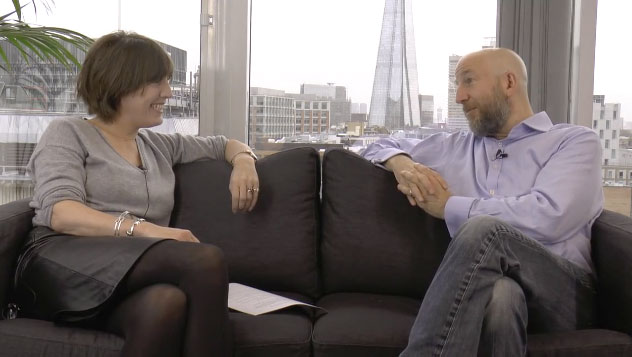
Merryn interviewed Daniel Godfrey some time ago, in which they spoke about how to improve the fund management industry, among many other things. Watch the video here.
It has been a bad week for Daniel Godfrey. A few years ago he was let go from the Investment Association for being a tad too aggressive about how the industry should treat its clients – he thinks the answer is “nicely”, but he is in a minority in the sector.
So he set out to transform fund management himself (if they won’t join you, beat them). Or at least to have a go at showing how to run a good fund at a lowish cost for the long term with an eye to both returns and social responsibility.
His answer was the People’s Trust – which I wrote about here a few weeks ago. It was to be a mutually owned trust with returns judged over a full seven-year rolling timeframe and assets managed by a group of fund managers chosen for their long-term stockpicking skills.
It was to be easy to understand; easy to access (you were to be able to get in for £25 a month via pretty much any platform); and always focused on the long-term fortunes of the investor over the short-term fortunes of the managers. I say “was to be” because this week the launch of the People’s Trust failed. To make the thing viable – so that the costs weren’t so high that they swallowed the returns – Mr Godfrey needed to raise £50m. He was hoping to get to £125m. He actually got more like £25m-£30m. So that, I’m afraid, is that.
You may be wondering why. After all, the trust was – on paper at least – just the job for pretty much all small investors.
To get the scale to keep the show on the road, Godfrey needed to get wealth managers on board. He didn’t. The trust was going to start out too expensive at about 1.1% a year, as is always the case with new launches that don’t have huge firms behind them to cross-subsidise them. Given that their own costs are high, wealth managers need to choose low-cost funds for their clients or their total costs end up too high for even them to justify without the odd blush. A trust like this is no help to them. Take away the seven-year target, they say, and how would it have differed from the fund of funds already on the market, such as Alliance Trust or Witan?
That might be to miss the point slightly, since the seven-year rolling target was intended to be the defining feature of the People’s Trust, but it does get us to the key issue here. If one fund can be diversified enough, effective enough and cheap enough to cover the needs of most investors with, say, less than £1m saved, what’s the point of a large part of the wealth management industry? Quite. For a wealth manager, buying into one-stop shop funds such as the People’s Trust can be interpreted as a very bad look indeed.
Still, Godfrey’s long-term plan was to be supported by individual rather than professional investors, hence the “people’s” bit in the name. So where were they?
The first thing to say is that they were definitely present: £30m is an impressive amount to raise from individuals. The second is that much more would have been a miracle.
Not much of the investing public is well versed enough in the corruptions and vocabulary of finance to understand that long termism can be a genuine USP. If you know little of how the business works and have little interest in it, it isn’t easy to sell you something that is better. So providers need a compelling story.
“China’s taking over the world!” and “you too can get access to the tiny companies usually reserved for the pros!” work. “The long term should be seen as seven years,” while quite right, just doesn’t. There is also the apathy problem. Even if you can persuade people that you have a story worth signing up to, you still have to get them over the admin line. I confess here that while I intended to apply for shares in the People’s Trust, I never quite got around to it.
The truth is that for a new trust launch to individuals to get away, one particular party has to be involved – Hargreaves Lansdown, the giant investment platform that hogs the UK’s retail investor market. It has heavily backed two big trust launches in the past, with a view to bringing new clients on to its platform: Fidelity China Special Situations and Neil Woodford’s Patient Capital. It facilitated the People’s Trust launch, putting it on its platform and offering bonus shares to investors, but it didn’t go all out for it. I wouldn’t necessarily have backed the ones it has, which are too niche for mass consumption. I might have backed the People’s Trust as a one-size-fits-all, low-risk option. But there it is.
I suspect Godfrey is done with being a fund firebrand for now. But anyone planning to be the next industry disrupter will at least start by knowing where the pitfalls are. In the meantime, if you are looking for a one-size-fits-all investment fund, there are many good ones (with a long-term bias) about. I have previously pointed to the Caledonia Investments (LSE: CLDN), RIT Capital Partners (LSE: RCP), the Trojan Fund and the Baillie Gifford Managed Fund (in all of which I, or my family, have holdings).
• This article was first published in the Financial Times